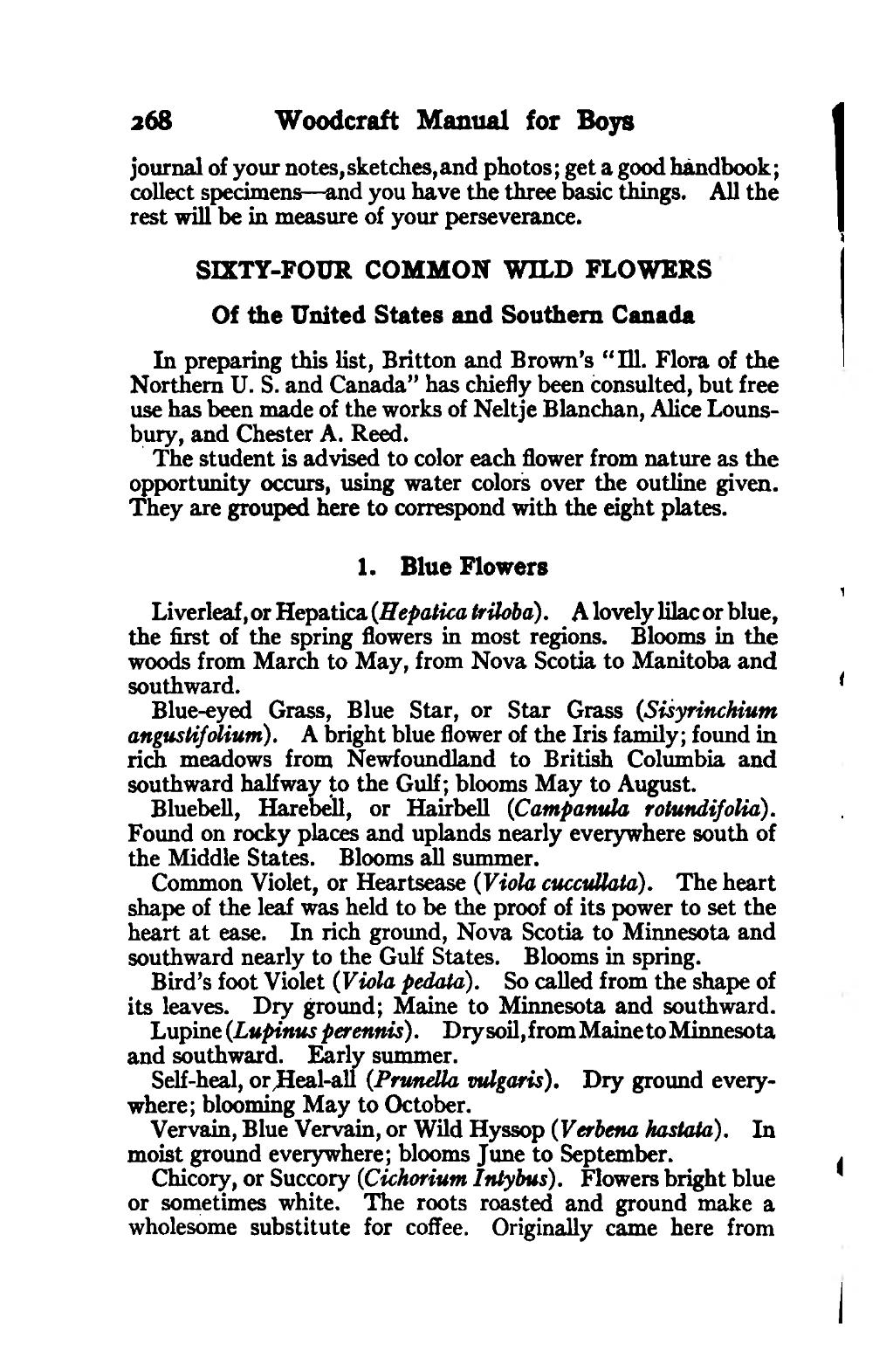journal of your notes, sketches, and photos; get a good handbook; collect specimens — and you have the three basic things. All the rest will be in measure of your perseverance.
SIXTY-FOUR COMMON WILD FLOWERS
Of the United States and Southern Canada
In preparing this list, Britton and Brown's "Ill. Flora of the Northern U. S. and Canada" has chiefly been consulted, but free use has been made of the works of Neltje Blanchan, Alice Lounsbury, and Chester A. Reed.
The student is advised to color each flower from nature as the opportunity occurs, using water colors over the outline given. They are grouped here to correspond with the eight plates.
1. Blue Flowers
Liverleaf , or Hepatica (Hepatica triloba) . A lovely lilac or blue, the first of the spring flowers in most regions. Blooms in the woods from March to May, from Nova Scotia to Manitoba and southward.
Blue-eyed Grass, Blue Star, or Star Grass (Sisyrinchium angustifolium). A bright blue flower of the Iris family; found in rich meadows from Newfoundland to British Columbia and southward halfway to the Gulf; blooms May to August.
Bluebell, Harebell, or Hairbell (Campanula rotundifolia), Found on rocky places and uplands nearly everywhere south of the Middle States. Blooms all summer.
Common Violet, or Heartsease (Viola cuccullata). The heart shape of the leaf was held to be the proof of its power to set the heart at ease. In rich ground, Nova Scotia to Minnesota and southward nearly to the Gulf States. Blooms in spring.
Bird's foot Violet (Viola pedata). So called from the shape of its leaves. Dry ground; Maine to Minnesota and southward.
Lupine (Lupinus perennis). Dry soil,fromMaine to Minnesota and southward. Early summer.
Self-heal, or Heal-all (Prunella vulgaris). Dry ground everywhere; blooming May to October.
Vervain, Blue Vervain, or Wild Hyssop (Verbena hastata). In moist ground everywhere; blooms June to September.
Chicory, or Succory (Cichorium Intybus), Flowers bright blue or sometimes white. The roots roasted and ground make a wholesome substitute for coffee. Originally came here from
